Imagine a world, in which you buy a light bulb, and you never need to buy one again just because “it breaks”. For in that world, stuff dœsn’t just break on its own anymore. It just keeps working. Like in the old days.
This now famous 19th century light bulb has been operational for at least 113 years.
(The Centennial Light, California, USA) A world with considerably less constant advertising, bugging you to go and “Buy the newest, bestest, improvedest evar – DO IT NAUGH‼” A world where manufacturers actually put more money into R&D than into PR. And don’t so often hold back their innovations in order to have them slowly trickle down into their upcoming products. Where product makers actually care for consumers’ needs and desires instead of merely for how to get them to keep buying stuff to no end. BACK TO THE FUTUREOnly it’s not the old days. It’s 2024. And a lot has changed in the past 10 years. Sheesh! How did I manage back then? My apartment was so cluttered! With all those… possessions. All that junk I had been accumulating over the years and hadn’t got around to sell on eBay. Not that anyone would have bought it for more than a dime and a half anyway. Like that old 2001 monochrome, monotone Nokia. I used to own so much stuff! My car, my furniture, my TV, my PC, my smart phone… the light bulbs! I actually owned the light bulbs. Can you imagine that? Every single one of them! And cash, of course. Now that’s all gone. I don’t own any of that anymore. I don’t even have one dollar. Well, technically, I have never owned one dollar anyway. Dollars are Fed property, after all. All you really do is borrow them. Someone dœs. At some point. That’s how they come into circulation. I DON’T BUY THIS SH!TAnyway! Now, all I have is this little piece of plastic I put into my smart phone. And that takes care of my credits. The credits I need to buy… hah… listen to me! Actually, I hardly buy anything anymore. That’s why I hardly own anything. Not even that smart phone. Or that plastic chip. Oh sure, I still regularly use light bulbs, and my tablet PC, my fridge, my car and all of that… no TV, of course – no need for that outdated crap when you’ve got a tablet PC with Holo-Out™! Thing is: All that stuff is LICENSED now. I.e., I use it under license. And – safe for some food in the kitchen, if you will – that’s all that’s left to me, all I really own: licenses. So every month or every day – depending on the product – I am charged a small licensing fee for using it, which basically boils down to its wholesales price divided by 12 or 365, sometimes 24 or 730, respectively. When it breaks… I mean… IF it breaks at all, I have it replaced by the manufacturer. When I want to rent something new, I order it. Nothing “pre-owned”, mind you. Not like that funky rental car you once got. This is all fresh off the assembly line! A WIN-WIN(-WIN) SITUATION?The companies are happy, for they can be sure they keep earning their money as long as I keep using their product. They don’t have to produce and market me anything new to keep paying their employees. In fact, they’re better off, if they make their products good and lasting enough to have me keep and enjoy them as long as possible. Just make it right once, and you keep earning. After one year, the wholesales price is in. Four months more, and retail is covered. From thereon: It’s all pure profit. This also means manufacturers don’t need to go out of their way and stock insane amounts of raw materials for constant mass replacement production. Rare metal prices plummet as they are not quite so rare anymore. And communes have less waste to take care and dispose off. All of which reduces CO2 emissions and relieves the environment in general. Take those licensed light bulbs. Ever since I made the big switch to the Licensed Lifestyle™ five years ago, I haven’t needed to change even one of them! I’m not sure how they do it, or what they used to do wrong all those years, but now these things just don’t seem to break anymore! Actually, come to think of it, I haven’t felt the need to replace my smart phone since five years ago either. Used to update every year or two! Now all I update is the firmware, which actually improves system performance instead of compromising it. And the apps and games keep getting better and better, as makers figure out how to squeeze more performance out of the “old” hardware. Just so I keep using the darn old thing! And I do. Why shouldn’t I? Heck, even my sneakers seem to have been staying in fashion for ages now! Like some high hat some 150 years ago that didn’t really go out of fashion for thirty years or so! Still, if I find a competitor offers a better product? No problem, I cancel the license, return the old product, and order and license the competitor’s offering instead. It’s capitalism without (all that) private property. I call it COMMITALISM. ■
Ubiquitous surveillance 24/7 – the NSA – security Vs. privacy – whistle-blowing: In 2014, this continues to be one of our biggest on-going topics. So here's my 2¢ on the subject: So far, the public is divided. People say either a) “Big deal! If you've got nothing to hide, you've got nothing to fear from Big Brother.” or b) “We're screwed! If Big Brother is watching you, you behave the way he wants you to… or else.” In my opinion, however, both these stances are missing the bigger picture.First off, let me tell you this, as a professed leftist: Transparency is a good thing! That's why, after all, judging from what we know about his case so far, Snowden is a hero, not a “criminal”. We don't want secret societies, we don't want corruption, we don't want taboos, we don't want terrorism. So, in theory (and quite ironically), ubiquitous surveillance through a caring democratic state should be a good thing, as this makes all of our lives highly transparent. After all, only those who've got something to hide are afraid of transparency, right? The counter-argument is, of course, that transparency might be a good thing in the public realm, but not in the private lives of citizens. Privacy should – duh! – remain opaque to the public. That's a private individual's own but nobody else's business. Because really everyone has got some things to hide. And sure: there is some truth to that, too! But why? Why do ordinary citizens have to hide things? What kind of things? From who? For what reason? What is meant by that vague “abuse of power” people fear might come with knowing about those things that therefore need to be hidden from public? Surprisingly (in my book at least), those are the questions I have rarely ever heard anyone ask throughout this entire on-going controversy. Because what hardly anybody seems to notice is that there actually is an intermediary link between the government knowing all the sleazy details of our private lives and the negative ramifications this could entail. That intermediary link is, surprisingly: Us. We, society. KNOW YOUR (TRUE) ENEMY How come that spying on all of us all the time gives the government power over us? How come that having all that private information matters, even if what we do is entirely legal? Because we, as a civic society, grant it that power!That's how and why you can be blackmailed with “embarrassing private details”. It's not the government that's going to punish you for those though. Instead, those who punish you are your neighbors, your boss, your colleagues, your classmates, your insurance, your supposed friends, your partner, your relatives! If anyone, it's them who're going to cast the stones. The state? The state doesn't give a funk what you do in your privacy, even if they know precisely what it is. Even if it is, I dunno, shemale midget porn involving ferrets. Unless, of course, people press the state to punish you on their behalf. A SIMPLE EXAMPLE
Not too long ago, the information that a person is homosexual used to be a weapon one could ruin that person's life with.
Fortunately, that's not so much the case anymore. Why? Because our society has become more tolerant! Still, even today, an active football player could easily be blackmailed with such an information about him.
So, I hope you see: It really is in our own hands. Big Brother isn't our enemy. We are our own enemy. “Man is a wolf to man”, as they say. Still today. Technology has been progressing fast. But our social progress towards a more tolerant society has been erratic.
Privacy is not the solution. Privacy grants shelter to domestic violence, child-rapists and yes: extremist views and terrorism, thriving in isolation from public scrutiny and controversy. Privacy should not be a protection we need. We need to move on and out of the closet. Embrace the merits of transparency! Stand upright for what you are, for what you feel and for what you believe in – openly and frankly!
VERDICT
If you want to disarm Big Brother, instead of attempting an IT arms race you're likely going to lose anyway, clinging to that privacy you believe you need to protect yourself with: instead, learn tolerance! Don't cast the first stone! Never mind what floats a man's or a woman's boat, if it's no crime and they do their job right! And please do not demand politicians to outlaw whatever you happen to feel is weird or awkward! That's an abuse of your power!
To put it briefly: be more considerate. And you'll be fine. Even if everyone and their mum knows what you did last summer.
(You'll know what they did, too. Hehehe…)
■
The first week in the new year 2014 is almost over, and it's been a while since my previous article here on this blog. Hence, to those of you who haven't been keeping track of my Facebook posts in the meantime: HAPPY NEW YEAR! Now for the answer to the second “Who am I?” (which you can read here). It is *drumroll*: Sonic the Hedgehog (a popular video game character) EXPLANATION “To make one thing clear: I'm NOT a rodent, okay? Particularly, I'm not a murine! What were they thinking?”
→ Hedgehogs are often mistakenly being referred to as rodents, which they are not. Instead, they belong to the order of Insectivora (“Insect Eaters”). Nevertheless, when Naoto Ōshima first came up with the character concept, the character was named “Mr. Harinezumi” (“Mr. Hedgehog”) – which, when translated (too) literally from Japanese reads “Mr. Needle Mouse”. Because that's kind of what a hedgehog looks like: a needle mouse, right? “Mr. ハリネズミ”
“Alright, so people now keep referring to me as a kind of suid, which is just about as wrong. But I guess there's no way around that in this silly language.”
→ Far from being referred to as a murine, this spiky critter is referred to as a sort of male suid, i.e., a male PIG aka a HOG by means of the English language. A hedgeHOG. “I wish people would cut me some slack already! All this constant criticism is turning me all schizo, lately. I swear!”
→ Throughout the past 15 years, Sonic's games have been subject to extensive criticism, as Sega have been trying to take the franchise into new directions. The main objection is that the tight and plausible physics and gameplay mechanics of the original 2D series, as published on the Sega Mega Drive (Genesis) in particular, has been dumbed down and/or distorted. Other criticism targets the art direction and character portrayals, which have been perceived as trying too hard to look “cool and mature”, infamously equipping “darker”, “grittier” versions of Sonic with realistic handguns, while really introducing a lot of cheese-laden and at times borderline homoerotic creepy furry teenage bubblegum vibes to the franchise. As a reaction to the widespread criticism, Sega have been trying to reconcile the franchise's new present with its past, which has produced some odd fruit such as the awkward simultaneous appearance of modern day Sonic and a more faithful 3D representation of his former 1990s 2D self, coined “Classic Sonic” by some, as two separate player characters in the 2011 game Sonic Generations. “Nu Sonic” and “Classic Sonic” meet
BUT… WHY A HEDGEHOG, ANYWAY? If you're gonna make a game revolving around a super-fast animal character, a hedgehog does not seem to be the intuitive choice, does it? They could've went with a cheetah instead. Or with a rabbit. Those are animals commonly associated with speedy running. But even if, perhaps, they wanted to be IRONICAL, other animals than a hedgehog seem to be more obvious picks. How about a slug? Or a turtle? The concept of a super-fast hedgehog, of all animals, arguably goes back to the GERMAN FOLK FABLE: “The Hare and the Hedgehog” (“Der Hase und der Igel”) – which in the Anglo-Saxon world is known in its original Aesop version “ The Tortoise and the Hare”. In this tale, the hedgehog challenges the fastest animal around – the hare – to have a race. Eventually, the hedgehog manages to make the hare collapse in exhaustion by using his doppelganger hedgehog relatives to make his opponent BELIEVE that he, the hedgehog, must have been traveling at uncanny speeds: round by round, the hare always finds the supposed hedgehog challenger waiting for him at the goal, no matter how hard he tries to outpace him. Serves him right, that speciesist hare bastard! The conceited hare is baffeled
(19th century childrens' book illustration)
In Sonic's case, of course, the twist is he actually IS super-fast. Though perhaps not quite THAT fast. ;-) THE NEW RIDDLE “‘How can something so small be packed with so much power?’, you may wonder. Well, you might not ask that so much, if you see my American brother… he's such a glutton! Making use of my power, people could save lots of coins, back in the day. And they could see the silver-shining future – sooner than most anywhere else. And while I'm kind of a lone wolf by default, with just a little investment, turns out I can be a real team-player. Who (or what) am I?” If you think you have figured out the answer, you can also post it on my Facebook pages. ■
Nintendo have been having a hard time grasping the legacy of their own franchises. What makes them, what breaks them. They've shown that time and again. Such as in the shape of the ho-hum direction of the New Super Mario Bros. series. Or the unfortunate turn towards shallowness the Metroid series took with Other M. Or, in the case of The Legend of Zelda, Nintendo's fairly recent attempts to shoehorn the series into an official chronological order, for instance. And with Nintendo's newest batch of official announcements via their December 18th Nintendo Direct online video, yet another entry to this unfortunate track record looms at the horizon. Quoting yours truly from Facebook: “
About that new Koei/Tecmo Zelda spin-off [tentative title: Hyrule Warriors]: Sorry, but it's WAY OFF! It's as if they had taken another game and simply slapped the name "Zelda" on it. I recognize Link, sure, he's the guy in green. I recognize that's supposed to be Hyrule Castle/Town in the background, alright. But the whole picture looks and feels NOTHING like "Zelda"! And I'm not talking about the unusual number of enemies. If you look back at the series so far, or just [at] A LINK BETWEEN WORLDS recently, Hyrule is mainly a SOUTHERN EUROPEAN, MEDITERRANEAN setting. It's mostly warm and dry, even desert-like, with Graeco-Roman and Spanish references sprinkled everywhere (including the original Zelda score). This here, including those knight characters, looks like they transferred the whole thing to NORTHERN ENGLAND. If you're like me, you enjoy games also for the specific atmosphere they convey. This just feels wrong. It's just not "Zelda". ” While some people have already expressed they share this notion, I decided to take this opportunity and further illustrate the point in a new mini-series of DŌMO POMO blog articles, in which I am going to elucidate, based on concrete evidence taken straight from the series, how and why “ Hyrule ain't the Highlands”. So, let's begin with the very basics: WHAT'S IN A NAME? “The Legend of Zelda”, alright. Why Zelda? Well, the popular narrative hawked by Nintendo's PR machine is that Shigeru Miyamoto, who invented the series, just happens to be a fan of American author Zelda Fitzgerald. And that's it. But doesn't that “explanation” leave a lot to be desired? It's safe to assume Miyamoto knew many more female names he, at least theoretically, could have used for this then-new series' damsel in distress. Why did “Zelda” fit the bill? Let's take a closer look. Zelda Fitzgerald, it turns out, was named by her mother after a fictional character in a novel. For that fictional Zelda is a beautiful GYPSY. Hey… just like the incarnation of Din, the Hyrulean Goddess of Power! Hm…
Nowadays, Gypsies can be found all over the world, of course, but the stereotypical Gypsy, particularly the prototypical beautiful Gypsy dancer, is commonly associated with SOUTHERN EUROPE. Countries like SPAIN and GREECE, most notably. Especially Spain's culture was MASSIVELY influenced by the influx of Gypsy culture (see Flamenco, for example). And indeed: the name Zelda, short form of GRISELDA, was first documented by an ITALIAN (that's, again, SOUTHERN EUROPE) renaissance poet named Boccaccio who introduced this as the Italian version of the Germanic (Central Europe) name Griseldis/Grishild. Similar to how Guiseppe really is the Italian version of the Hebrew name Joseph. So there you go: Princess Zelda actually has an ITALIAN name. It's official. Hey… just like a certain other famous Nintendo character by Shigeru Miyamoto…
■
Every now and then, companies – especially in the field of entertainment media production – like to provide their audience with something occasionally referred to as “fan service”. Where for their “regular service”, such a company would probably consult one of their art/creative directors what they believe their brand's next step to greatness will be, for “fan service”, it's all about what the company perceives to be their consumers', that is to say, the fans' ideas. Which the art/creative directors have likely been deliberately disregarding up to that point, and likely for good reason. Basically, “fan service” is like putting a suggestion box in front of some memorial in Washington, D.C. and then drawing one of the submitted slips to turn whatever's written on it into LEGALLY BINDING, ENFORCED LAW. No matter how jarring and beyond all good reason the outcome would be. After all: people asked for it!This way, what you'll likely end up with are things like “free mandatory guns'n'ammo for elementary school students”. Or – getting back to the realm of entertainment media – a fiercely steamy love triangle between Sheldon, Penny and Wolowitz. In which Sheldon is the driving force. Or, well: a “Zelda Timeline”. It's right up there with the other two. “ BUT… BUT… IT'S MIYAMOTO'S MASTER PLAN! :( ”No, it's not! It OBVIOUSLY is not! When prompted about where The Windwaker falls into “the timeline” by some loony press conference guest at E³ 2002, Shigeru Miyamoto basically replied that he wasn't sure what marketing had decided yet. Get it? The guy doesn't CARE! It's simply not his THING! He's an ARTIST. Artists, creative people, are not all about arranging everything into a neat, linear order! They aren't AUTISTIC. A small autistic boy (who looks like the newest Link) and his toys
Well, some of them actually might be, but you get the damn point, don't you? But hey, for the sake of argument, let's just pretend it was “Miyamoto's Master Plan”. What do I know? Maybe this insane, bloated, sprawlingly complicated, phony-plot-device-infested piece of work is precisely what he had in mind all along since 1986 or even before. What then? Well, then so what? It's STILL a BAD IDEA! An artist doesn't always necessarily know what's good for their œuvre. Has George Lucas always known what's good for Star Wars? (I like Penny Arcade's comment on that matter…) Artists aren't infallible. Artists can SNAP. What if Leonardo da Vinci had snapped and smeared his Mona Lisa with feces till they blended with the then-still-wet paint into a homogenous, stinking mass? Would we appreciate that “painting” today? Well, newsflash: only painters born AFTER 1850 are eligible for such a kind of docile recognition! That abomination would've been tossed into a trash bin the same hour they'd have dragged da Vinci off to the nearest funny farm. WHY IT'S SO BAD The “official Zelda timeline”, as “confirmed” in Nintendo's publication Hyrule Historia and promoted again for the recent release of the newest game in the series, is an afterthought designed for mere marketing purposes. And you can tell. Starts with the fact that ever since NOA gave in to the pesky fan inquiries and published a first “official timeline” on one of their websites just a few years ago, they had to REVISE it later to fit in newer installments. And without having to go through any of the current timeline's messy details, let me just put it this way, briefly: If you've got to resort to things like TIME TRAVEL, REINCARNATION and/or PARALLEL UNIVERSES in order to clumsily deal with neat little unruly amenities like ever-recurring/-recycled characters suffering from ever-recurring amnesia and an ever-shifting, flat-out self-contradictory geographical topology, so you can shoehorn a series that's obviously NOT geared towards continuity into a halfway linear chronological order, well… maybe you just SHOULDN'T! It's fighting it, you're forcing it. It's FRANCHISE RAPE. It's ugly. NO!
(Aside from that, it's a slippery slope from thereon: while you're at it, why not integrate the Mario series into the Zelda timeline as well? Then, add Metroid, Pikmin, Pilotwings and, hell, for good measure, Metal Gear and Sonic to the mix. It IS possible. With time travel, reincarnation and multiple universes in one's repertory, just what isn't?) VIVE LA RÉSISTANCE!Luckily, despite NCL's endorsement, public reception of these ungraceful explanatory efforts has been all but unanimously welcoming. Criticism ranges from petty squareheads finding flaws with the little intricate details of this chronological monstrosity, way to cool hippies (such as, ahem, yours truly) rejecting the whole idea such a timeline is even needed, let alone desirable. So turns out fortunately, it seems I'm by far not the only one to always have felt that the games in the series are not MEANT to be chronological. Instead, they are RE-IMAGINATIONS of a – surprise – LEGENDary hero and his uncounted adventures. Why bother and explain that away somehow? It's perfectly fine! ■
So the answer to the first “Who am I?” (which you can read here) is: Point'n'click adventure (a video game genre) “You won't impress me with your collection of coins, and I'd rather not hang out in your living room.”
→ Point'n'click adventure games are hardly ever found on coin-op machines, i.e., in game arcades. Typically, their home is home computers, i.e. PCs, Macs etc., which, unlike game consoles, most people don't keep in their living rooms. This is because the genre is based on the idea of adopting the mouse-controlled point'n'click user interface of modern computer operating systems for game controls. Hence the genre's name, of course. “If you want to make any progress dealing with me, you better show me what to do and then say: ‘Go ahead!’”→ The core gameplay mechanic in a typical point'n'click adventure is to direct a pointer – typically by moving a computer mouse – to a location within the displayed game world and then to command the player character to perform a certain action relating to that location – typically by pressing a computer mouse button. The default action for the player character typically is to simply approach the appointed location as closely as possible. “Though sometimes you might feel it's like looking for a needle in the haystack: it's the only way.”→ A typical nuisance found with point'n'click adventures are situations, in which the only way to progress in the game is to find a very particular location in the game world displayed, sometimes a mere single pixel in a scene stretching over more than one screen (the “needle in the haystack”). Allowing such situations is commonly viewed as an ill-advised design practice that requires particular justification within the game context. A very early example of the genre:
Planet Mephius (T&E Soft, 1983)
Although people in the Western hemisphere commonly associate the genre with Western game production – notable game makers like LucasArts and Sierra come to mind – point'n'click adventures actually have their origin in Japan, where they've been serving as a vehicle for manga- and anime-based license games first and foremost.
Dialogue sequence in a more recent point'n'click adventure classic:
Discworld (Psygnosis, 1995)
On to the new riddle:
“To make one thing clear: I'm NOT a rodent, okay? Particularly, I'm not a murine! What were they thinking?
Alright, so people now keep referring to me as a kind of suid, which is just about as wrong. But I guess there's no way around that in this silly language.
I wish people would cut me some slack already! All this constant criticism is turning me all schizo, lately. I swear!
Who (or what) am I?”
■
“You won't impress me with your collection of coins, and I'd rather not hang out in your living room.
If you want to make any progress dealing with me, you better show me what to do and then say: ‘Go ahead!’
Though sometimes you might feel it's like looking for a needle in the haystack: it's the only way.
Who (or what) am I?”
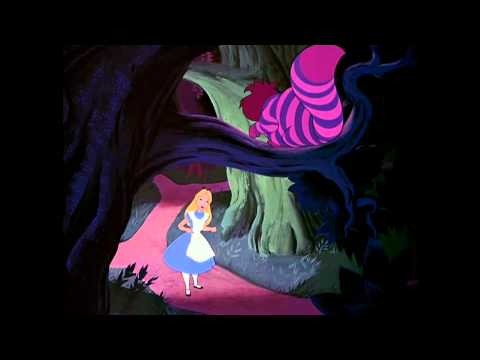 © Walt Disney
■
This is not your typical 10th, 25th, 50th or, oh dear, 100th anniversary. But some anniversaries do deserve a mention every year. Like in this case!
Today, 23 years ago, on November 21st 1990, one of Nintendo's genuine masterpieces was first published: enchanting one new slew of both aspiring and seasoned video game afficionados after the other, Super Mario Bros. 4 aka SUPER MARIO WORLD (SMW) can be considered a true video game classic.
The game conquered players' hearts and minds right from the start, yielding glowing reviews. This although even back in 1990, save for some of the Super Famicom's (SNES') special effects at display, SMW's visuals seemed kind of… tame. People had already seen other jump'n'run games with more vividly detailed, parallax-heavy spectacle going on than what this sedate chubby plumber had to offer. Despite making noticeable use of the Super Famicom's potent graphics capabilities throughout, SMW's visuals went AGAINST the mainstream trend of ever more sprawling details oozing out of game graphics. Instead, they went for visual CLARITY, bordering ABSTRACT ART at times, drawing heavily on the design principle that sometimes…
More like: “Mario in Cubist World” … Sometimes, Less is MoreAnd it got away with it. Because it simply worked. In clever combination with and support of the level design, SMW's “clean” visuals actually CONVEYED. These designs were full of charm and atmosphere! They just pulled you in! You WANTED to GO THERE. This design principle also showed in the general gameplay choreography: Where predecessor Super Mario Bros. 3 wowed players with a tsunami of neat little ideas and add-ons, SMW went for a more sweeping motion, the bigger picture, proving that it's not the mere NUMBER of ideas that counts. And that's precisely what SMW feels like: BIG. Bigger than any other “Super Mario” so far. Also thanks to the brilliantly illustrated overworld map – the most compelling of any Super Mario jump'n'run so far – the game conveys a sense of scale like only few others have managed to. Thus, it can be said SMW truly is an exhibit of the high art of visual design. Add to that the spot-on controls, the engaging hunt for “secret exits”, some catchy tunes making good first use of the “new hardware” and sound-effects that match the visual aesthetics. And, of course, SMW premiered one of Nintendo's most beloved sidekick characters: YOSHI! Um… yeah…
(Yes… the game actually encourages you to do this.)
Whatever Happened to All the Dinosaurs?In all fairness, one point of criticism needs to be raised: Not being able to read and understand any of the Japanese text of my imported copy of SMW back when I first got it, I had NO IDEA the game was supposed to take place at a location called “DINOSAUR LAND”! Huh? What? I think the game falls a bit short in that respect. To me it has always looked just like a re-imagination of the Mushroom Kingdom with some occasional dinosaur-/dragon-esque enemy characters sprinkled in – right between some giant-sized Bullet Bills and some Koopa-Troopas playing baseball. In other words: AWESOMAGE!Anyway. So, roughly eight months after SMW's original publication in Japan, it seemed Nintendo ( of America) were dead-set to make a point that sometimes, less is A BORE: Boxart Localization FAIL.
■
Whenever there is another news bit about Shigeru Miyamoto planning on getting less involved with Nintendo's creative output and instead pursuing a career in home gardening or something, waves of shock and awe blast through the Nintendo fan community – especially nowadays, as Miyamoto is fast approaching the typical age of retirement: “Oh woes! Oh noes! Whatever will we do? Whatever will NINTENDO do without Miyamoto? They're LOST without him! WE are LOST without him!” While others remark: “Well, actually… maybe some fresh blood would do them good. Miyamoto's dominance has been keeping the company from taking on more mature content in their games.” (Not a direct quote.) But neither is true. Shigeru Miyamoto: a man of many talents and interests.
People like to picture Miyamoto as this “mastermind” who's deeply involved with just about every creative decision Nintendo make for their games. He basically RUNS the company. Safe maybe for finances and marketing and stuff. That's Iwata's and Reggie's resort. This despite the fact that Miyamoto himself has kept pointing out time and again that, in the course of getting promoted to higher ranks, he's been delegating his original creative responsibilities to OTHER PEOPLE, including his DIRECTOR'S SEAT (!), being more and more of a supervisor than an actual artist, ever since way back in the days of the Super Famicom / SNES! And Nintendo's general “family entertainment” direction with all their cute and colorful characters and worlds has not been tied to Miyamoto either. I'd even argue Nintendo's style has become MORE sugar-coated and more Disney-ish as Miyamoto has gradually been moving away from the actual drawing boards towards more executive/monitoring roles. And there's been PLENTY of MASSIVE, super-cute Nintendo franchises Miyamoto had next to nothing to do with: Pokémon anyone? Kirby anyone? So I think it is safe to say that IF Nintendo are going to change their general art direction, they're not going to wait for Miyamoto to play (even) less of a role in their creative output volume. A Matter of FairnessPeople are strange. They like to view the world in BLACK and WHITE. You're either the whipping boy, irrationally hated on and blamed for everything, no redeeming qualities. Like the Virtual Boy. Or you're revered as an infallible genius without whom all would fall to pieces, and fast. Like a SUPERSTAR. Like Miyamoto. But putting Miyamoto on a pedestal like that is – if flattering – UNFAIR, as it puts too much burden on him and gives way too little credit to the many other brilliant people who've been coming up with the MAJORITY of things Nintendo fans have been holding in highest regard since the Super Famicom / SNES days. (And no, I'm BY FAR not just referring to Koji Kondo here.) So maybe you believe Yoshi's Island's ingenious crayon art style – surely, that must be a “true Miyamoto”, huh? Not surprisingly, even Wikipedia suggests that, quoting Steven Kent: “Rather than change to an artistic style he did not like, Miyamoto made the game even more cartoon like, giving it a hand-drawn look.” But let's take a look at the game credits, shall we? Responsible for the visual design are: Hisashi Nogami, Tomoaki Kuroume and Yoshiaki Koizumi. Hm… okay, but surely, Miyamoto DIRECTED them, didn't he? Nope, he didn't. Shigefumi Hino did. Brilliant, certainly! But how much “Miyamoto” is in it, actually?
What the fungus? So what DID Miyamoto contribute to Yoshi's Island?
He was the PRODUCER of the game, which is the one executive position in game production that is most remote from the actual production process. A producer might, in fact, NOT EVEN SHOW UP ONCE throughout the entire production phase!
If Miyamoto changed the art direction of the game himself, what this really means is he CONFIRMED one of the suggestions the designers came up with. That's about the deepest level of involvement a producer typically has.
Having that said, Miyamoto IS the “father” of Mario and Zelda and Metroid. He had a tremendous input on the design of many a Nintendo console, and he probably still has quite a say in that respect. He shaped Nintendo's handwriting for many years and throughout what many view as their creative zenith in the late 80s and early 90s. And the influence of this has been far-reaching. But that be-all-end-all “Master CPU” right at the hub of all of Nintendo's creative efforts? That he was perhaps in the 1980s. After all, he was the producer, director AND lead designer of Super Mario Bros. (Famicom/NES). But even Super Mario World (Super Famicom / SNES), which has its 23rd anniversary tomorrow, BTW, was both directed and designed by other people.
So yeah: actually read the staff rolls of your favorite Nintendo classics once in a while. You might be surprised about what you do find there and what you don't. (Thing is: you might have to learn some new Japanese names.) ■
|


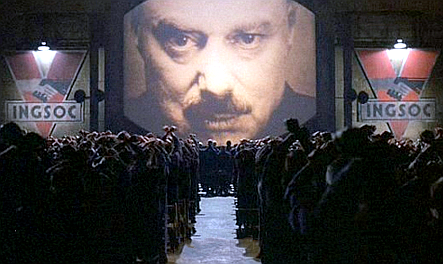

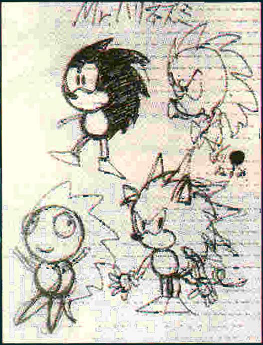

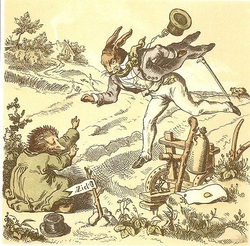

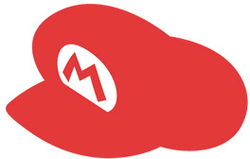

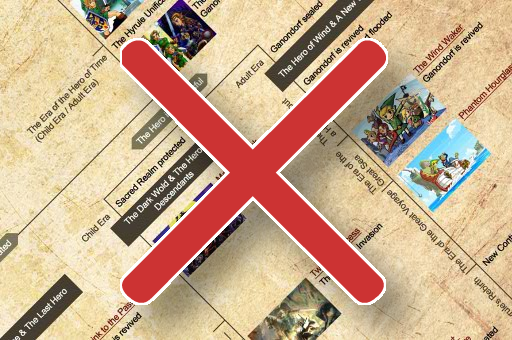
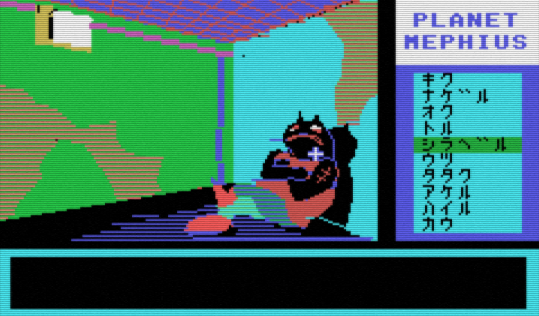
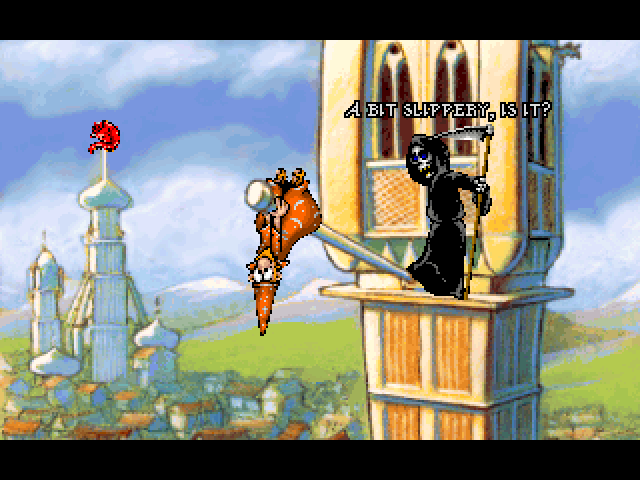


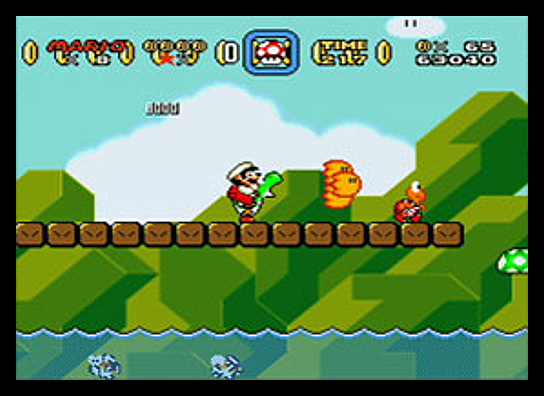

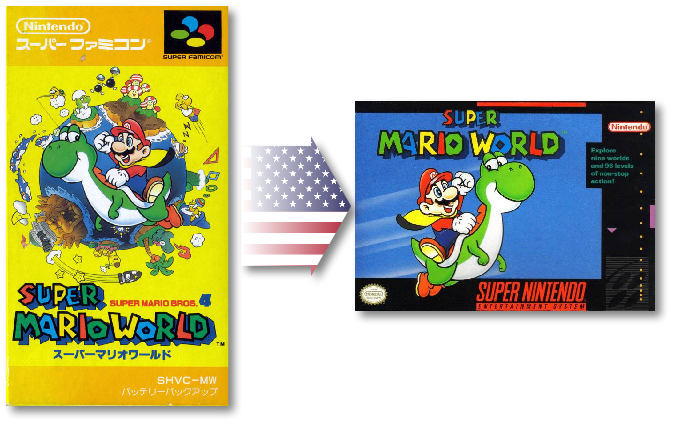

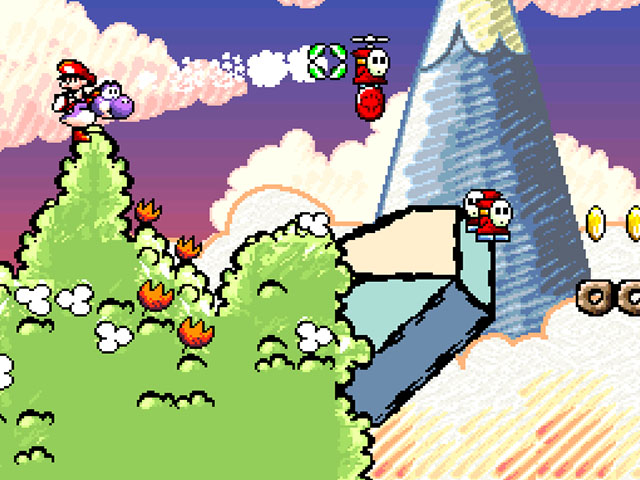

 RSS Feed
RSS Feed